Employee Turnover Rate: The Ultimate HR Guide
Last Updated Nov 4, 2025

High turnover is a warning sign.
Every time an employee leaves, your team loses knowledge, momentum, and morale. Not only is recruiting and onboarding replacements expensive, it disrupts workflows, frustrates managers, and strains your remaining staff. When too many people head for the door, your culture and customer experience can take a hit, too.
But there’s good news: turnover is a problem you can actually fix.
Start by understanding how to measure it — and what it really says about your workplace. Then, target the root causes with smart retention strategies that put your people first.
Uncover the benefits of tracking employee turnover, and discover how to turn those numbers around.
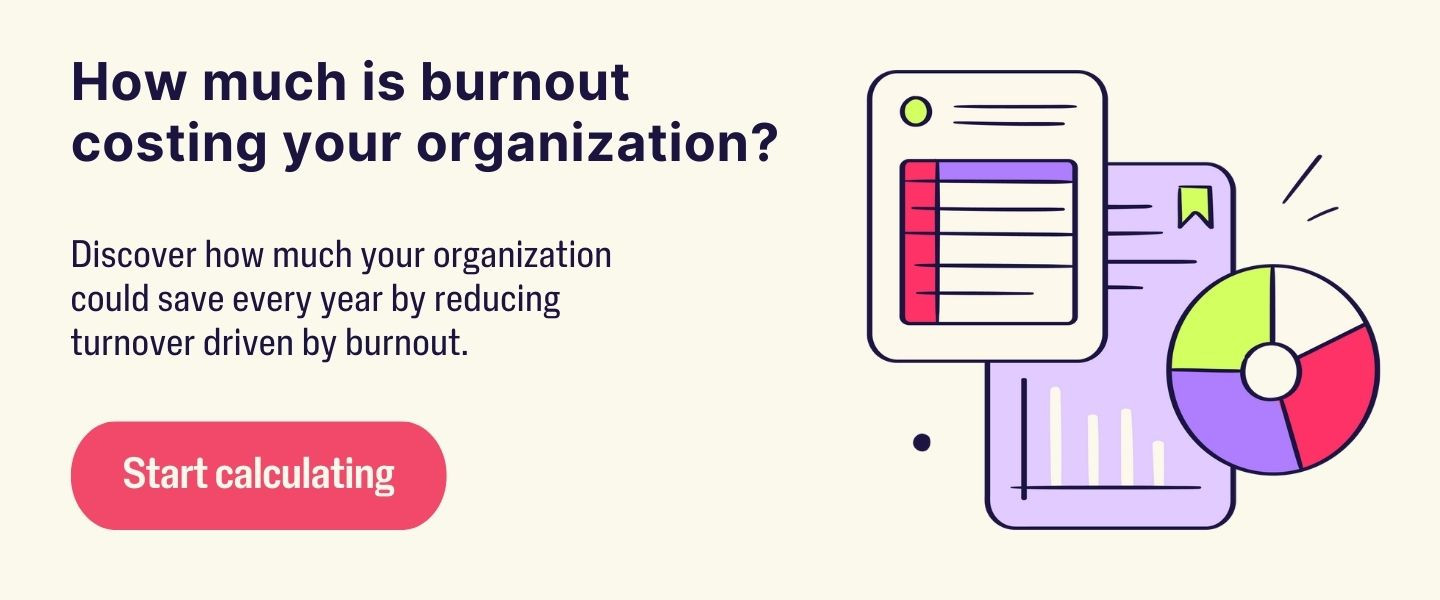
What You'll Learn
- The difference between voluntary and involuntary turnover — and why it matters when diagnosing root causes.
- How to calculate employee turnover rate step by step.
- The direct and indirect costs of high turnover, from recruiting expenses to lost institutional knowledge.
- Common drivers of turnover, including poor culture, weak onboarding, and lack of career development.
- Proven strategies to reduce turnover, such as improving onboarding, fostering positive culture, and investing in employee wellbeing.
What Is Employee Turnover Rate?
Your employee turnover rate is the percentage of employees who leave your company within a specific period, such as a year. A higher employee turnover rate means more employees are leaving, potentially creating gaps in your workforce that you then need to fill with new hires.
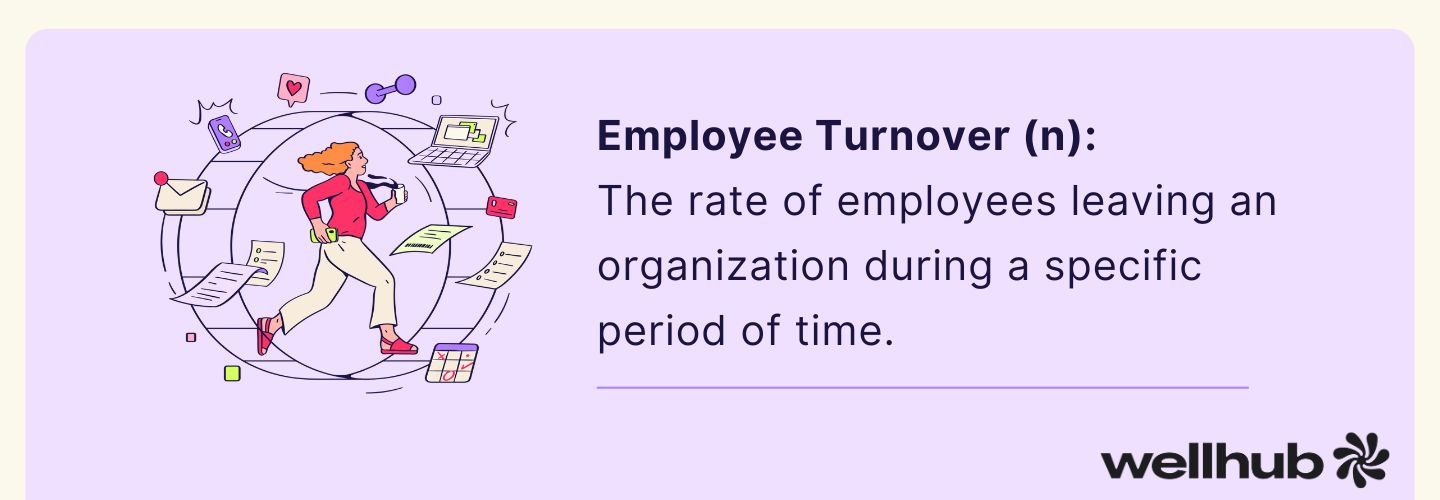
HR leaders and business executives can learn invaluable insights about their companies by analyzing their employee turnover rates. If you notice a high turnover rate, there are likely underlying problems within the business that prompt employees to leave more frequently. The effects of a high turnover rate are far-reaching, too. You'll face negative impacts on employee productivity, morale, and customer relationships, as well as the direct costs of recruiting, hiring, and onboarding replacement employees.
Fortunately, there are always steps you can take to improve your employee turnover rate. For example, employees are much more likely to stay at an organization that supports their wellbeing. So, you could adopt additional measures to improve employee wellbeing to reduce your turnover rate.
Voluntary Turnover vs. Involuntary Turnover
Before you calculate and analyze your turnover rate, it's important to distinguish between voluntary and involuntary turnover. Considering these two types of turnover separately can help you gather a more nuanced understanding of why employees are leaving your company and how you should address any underlying issues.
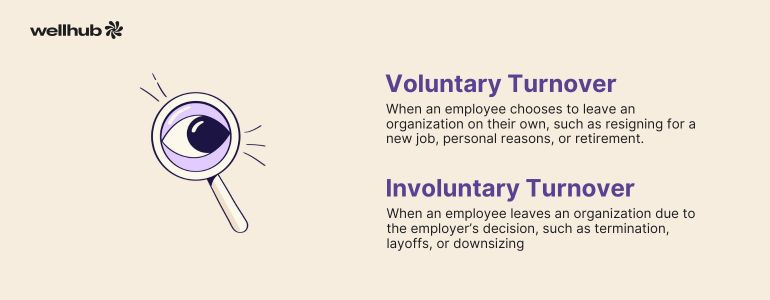
Voluntary Turnover
Voluntary turnover is when an employee chooses to leave a company. Whether they got a new job, are pursuing a career change, or just need to leave for personal reasons — if it's the employee's decision to leave, it's voluntary turnover.
Involuntary Turnover
By contrast, involuntary turnover is when the employer terminates the employee. Typically, involuntary turnover occurs in cases like:
- Poor performance: The employee was not meeting their job expectations even after receiving feedback and help.
- Organizational changes: The company is merging with another or restructuring, which may involve eliminating certain positions as part of the process.
- Layoffs: Due to strategy changes or economic changes, the company needs to eliminate some job positions.
- Evolving skills requirements: The employee's skills have become outdated, and they are unable to adapt, prompting the company to terminate them.
High voluntary turnover tells you something very different about your company than high involuntary turnover. If you're trying to bring down voluntary turnover, you would typically focus on retention strategies, like providing unique employee benefits or providing growth and development opportunities to make your employees want to stick around.
If you're trying to lower involuntary turnover, you might reassess your recruiting strategies and onboarding. Hiring the right people for the job and onboarding them effectively will go a long way toward reducing involuntary turnover.
How to Calculate Employee Turnover Rate
Calculating your employee turnover rate is the first step toward understanding how well your employee retention efforts are working. Use these steps to calculate employee turnover in your workforce.
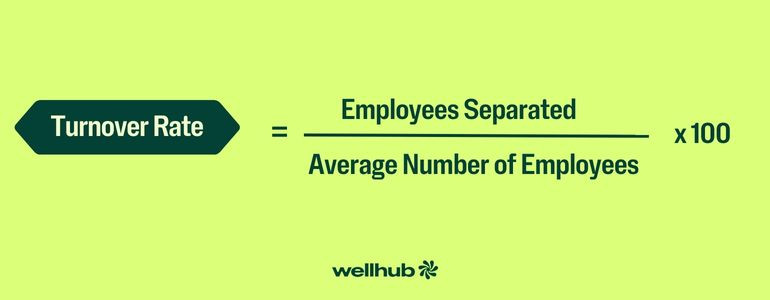
Step 1: Define a Time Period
You can calculate employee turnover for any period of time that interests you, like a month, a quarter, or a year. Typically, businesses primarily analyze yearly employee turnover.
Just make sure you stay consistent with the timeframe you choose for your analysis. If you compare the number of employees who left in the last year to the average number of employees you have had in the last quarter, your employee turnover calculation won't be accurate.
Step 2: Calculate the Average Number of Employees
One of the two numbers you need to calculate your employee turnover rate is the average number of employees your organization had during the selected time period. But that's not a number you can just pluck from your records. You need to calculate it.
The simplest way to calculate the average number of employees is with this formula:
(Number of employees at the beginning of the time period + Number of employees at the end of the time period) / 2
Step 3: Count the Departures
Count the number of employees who left your organization, either voluntarily or involuntarily, during the time period.
Step 4: Calculate the Turnover Rate
Now that you have the necessary information, calculate your employee turnover rate with this formula:
Employee turnover rate = (Number of departures / Average number of employees) x 100
Employee Turnover Rate Example
Say, for example, you want to know your employee turnover rate for the last year. You had 500 employees at the beginning of the year and 450 at the end of the year.
If you add 500 to 450 and divide the total by 2, you get an average of 475 employees during this period.
Subtract the number of employees at the end of the period from the number of employees at the beginning of the period to get the number of departures. In this case, 500 minus 450 is 50 employee departures.
Finally, divide the employee departures (50) by the average number of employees during the period (475) and multiply by 100 to get your employee turnover rate. In this calculation, 50 ÷ 475 is 0.105. Multiply by 100 to get a final employee turnover rate for the year of 10.5%.
What Your Turnover Rate is Telling You
After they do this calculation, business leaders always want to know whether their turnover rates are "good" or "average." What is a good employee turnover rate? Is 20% staff turnover too high? What about 25% turnover? Really, it's hard to answer questions like those without more details.
Some industries, for example, tend to experience higher employee turnover than others. For companies in industries like hospitality, construction, trade, and manufacturing, it's normal to see high voluntary turnover rates.
A high or low turnover rate in isolation doesn't tell the whole story of your company culture and how well you manage the employee experience. You should always consider additional HR metrics to gain a deeper understanding of what's happening in your company and identify the necessary steps to improve retention.
What Is a Healthy Turnover Rate?
Generally, a healthy turnover rate is any rate that doesn't lead to overly high costs of employee turnover. It's normal for some employees to leave during any given period, either because they choose to move on or because you need to eliminate their positions.
You'll know that your turnover rate is too high when you're seeing significant effects and costs of turnover — like lower productivity, overly high hiring costs to replace employees, and frustration among remaining employees — leading to a toxic work culture.
Employee Turnover Rate By Industry
The average rate of employee separations (encompassing both voluntary and involuntary turnover) was 3.3% across industries for one month — July 2025 — reported by the Bureau of Labor Statistics.
Some notable industry turnover rates from the same report included:
- Government: 1.3%
- Professional and Business Services: 4.7%
- Leisure and Hospitality: 5.9%
- Finance and Insurance: 2.2%
- Construction: 3.8%
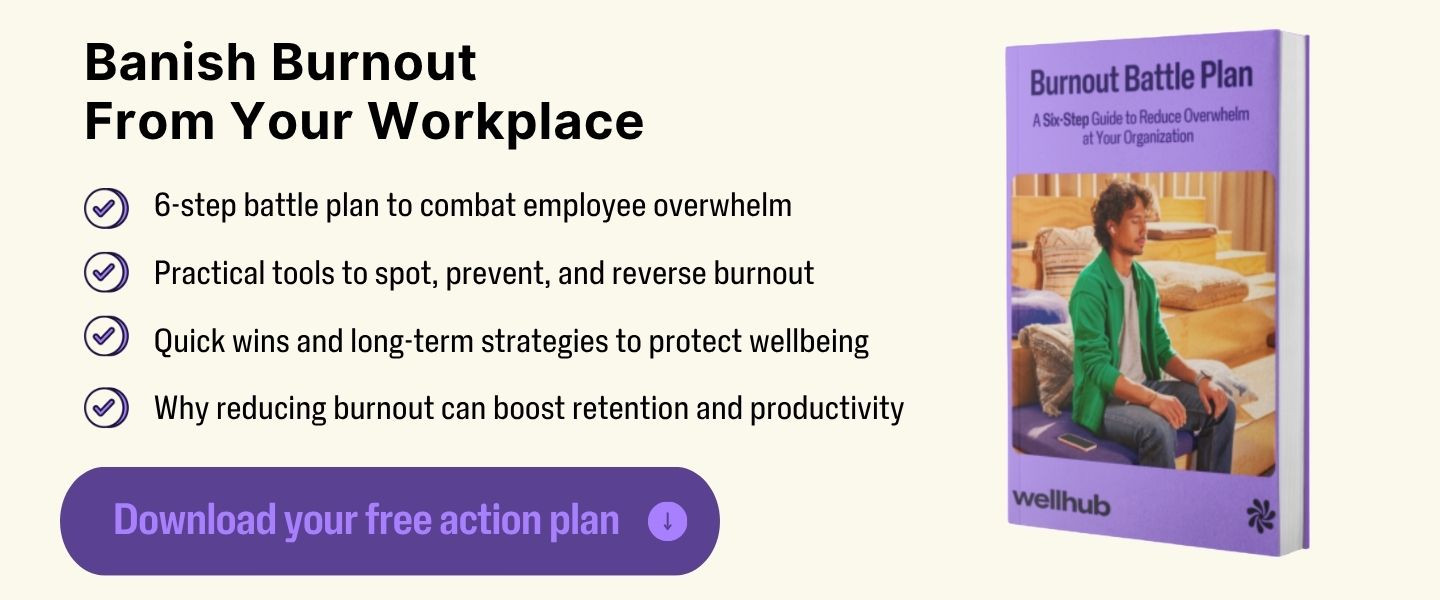
What Types of Employees Are Leaving?
It's worth paying attention to the types of employees who are leaving your company. Ask yourself questions like:
- Do they tend to be new hires or experienced professionals with years at the company?
- Do the employees leaving tend to come from specific departments or groups within your organization?
- Are there any job responsibilities or tasks that the employees leaving tend to have in common?
If you can find common links between the employees who leave your company, you'll have a much better understanding of why they leave. Then, you're one step closer to understanding the root of your employee drain.
Not all turnover is the same. Find out which types matter most—and how to manage them strategically.
Why Are Your Employees Leaving?
Dig deeper into why employees leave your company.
With involuntary turnover, possible causes of a high turnover rate include:
- Poor hiring practices that lead to putting the wrong people in the wrong positions.
- Poor management that fails to get the best performance out of the employees.
- Weak training and development that contribute to performance issues.
- Organizational issues and unclear policies that lead to policy violations and terminations.
- Economic instability that prompts downsizing and layoffs.
With voluntary turnover, consider possible causes like:
- A toxic work culture.
- A lack of career development programs.
- A management style that doesn't work for the employees.
- Low employee engagement and job satisfaction.
- Infrequent performance reviews and not enough employee recognition for good work.
- Inadequate pay or benefits.
- Poor work-life wellness and unreasonable work expectations.
If you're not sure why employees are moving on, try simply asking them directly. Implement an offboarding process that includes a question about the reason employees are leaving the company. Then, look for patterns and commonalities across all the reasons that employees give when they leave.
The Impact of High Employee Turnover
Employee turnover is more than just a metric — it's something that can impact every aspect of your organization and create tangible costs, both directly and indirectly.
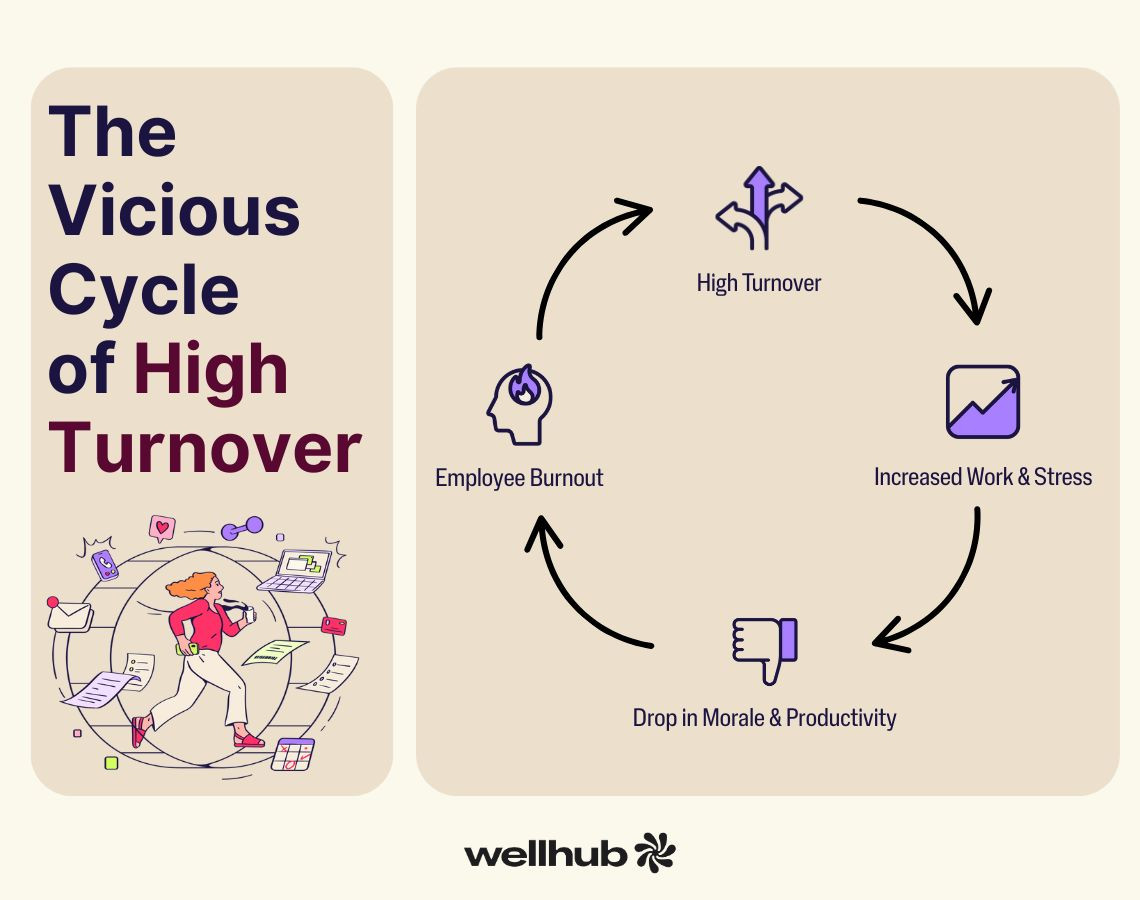
Direct Costs of Turnover
When employees leave your company and you need to replace them, you face several direct financial costs. These include:
- Recruitment and hiring expenses: On average, companies spend nearly$4,700 to hire each new employee. For specialized positions and executive roles, that cost can be much higher. You have to pay to advertise the open role, cover the costs of pre-employment testing, and allocate a budget for expenses such as signing and relocation bonuses. If you have a lot of turnover, these hiring expenses can add up quickly.
- Onboarding and training: Then, once you have your new hires, you still have to onboard and train them. The onboarding materials and training programs are additional direct costs of turnover.
- Separation costs: When an employee leaves, you may still have to cover expenses like severance pay, ongoing employee benefits, or higher unemployment insurance claims.
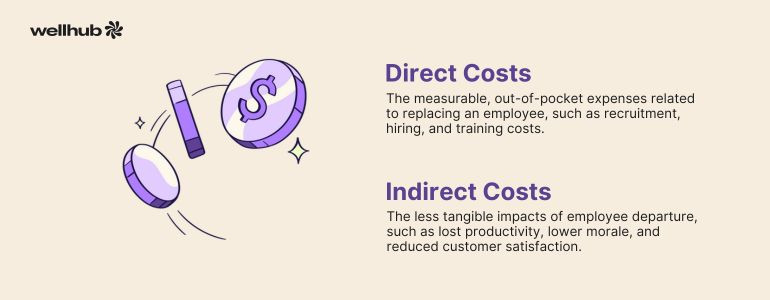
Indirect Costs of Turnover
Beyond those direct costs of turnover, there are also indirect costs that can make high turnover rates more damaging. For example:
- Disrupted productivity: In the time it takes you to hire and onboard a replacement employee, your team will be left with one less person to do the work. Collectively, they'll be less productive and possibly distracted due to the disruption.
- Decreased morale: The departure of friends or valued team members can be upsetting to the remaining employees, leading to a decline in morale. The departures disrupt their team dynamics, possibly making them think about leaving, too. Employee engagement may go down during this time.
- Lost institutional knowledge: Employees who leave, especially experienced employees who have been at your company a long time, take valuable knowledge with them. They know the ins and outs of how your company works, which will likely not be the case with their replacement.
5 Common Causes of High Turnover
If you notice a troublesome employee turnover rate, you need to start investigating the cause within your organization. You can only make significant improvements once you know why so many employees are leaving. Consider these common causes of high turnover:
- Inadequate Compensation and Benefits
It's very hard to keep quality employees when you provide low salaries, inadequate benefits, or otherwise non-competitive compensation. Employees will leave if they can reasonably expect to receive stronger compensation somewhere else. So, take a look at the salaries you offer to make sure they reflect market rates. And don't discount the importance of your benefits package. A company's benefits package is a crucial component of the employee value proposition.
- Unsupportive Workplace Culture
A toxic or negative work environment is the top reason that employees choose to leave their jobs. If they come to work every day dreading the time they spend there, knowing that they will be miserable and uncomfortable, why would they stay? They'll start to look for jobs at companies with more positive workplace cultures.
Consider the elements of a strong, appealing workplace culture for employees. There would be great work-life wellness. Employees would not be required or even asked to sacrifice their wellness to meet unreasonable expectations. There would also be several types of employee recognition, so employees know that their good work will be noticed and rewarded.
If your workplace culture lacks these elements, it's possible that it's contributing to a high employee turnover rate.
- Lack of Career Development
Employees also often want to be able to climb the ladder and advance in their careers. If your company doesn't provide opportunities for professional growth and leadership development, they may look for those opportunities elsewhere.
- Poor Leadership and Management
Managers and other company leadership shape the employees' workplace experience. A supportive, available manager can make employees' jobs much easier and more appealing. On the other hand, issues with company leadership, including their managers, can damage every aspect of the employee experience. Even if everything else about the company is great, employees often consider looking for another job if leadership is poor.
- Ineffective Onboarding and Mismatched Fit
Business leaders often focus so much on the hiring process and selecting the right candidate that they don't put enough thought into the onboarding process, which is just as important.
If you have a weak onboarding process, new hires will likely feel unprepared and disengaged. It will take them more time to get up to speed. In the meantime, their team members have to pick up the slack. The result is potentially lots of frustrated employees who will start to consider moving to a different job.
Similarly, if you place an employee in a role that's not a good fit for their skills, they'll probably struggle to succeed and become frustrated. The team members around them might also be disappointed or annoyed that the employee can't pull their weight. Once again, this situation can prompt a desire to leave the organization.
Strategies to Reduce Employee Turnover
You can always take steps to reduce your employee turnover. When you implement these strategies successfully, your employees will be happier and more productive. You also won't have to manage the high direct and indirect costs of turnover, like recruitment costs.
Emphasize Holistic Wellbeing
Some employers make the mistake of thinking that they should only care about their employees while they're at work. But employees are real people with lives outside of work. And many of those outside factors have a significant impact on them at work, too.
An employee who is in good health and feels less stress won't just be better off in their home life — they'll be better off at work as well. That's why one of the best ways for a company to show that they care about their employees is by emphasizing holistic wellbeing. But what does that really mean?
Holistic wellbeing is about improving physical, mental, and emotional health, as they're all interconnected. For companies, improving your employees' holistic wellbeing can involve measures like:
- Offering competitive paid time off and encouraging employees to use it.
- Providing ergonomic equipment to reduce workplace injuries and keep employees comfortable.
- Offering a flexible work schedule or remote work to accommodate employees' distinct schedules when possible.
- Making stress management resources available.
- Putting together team-building activities and regular social events to strengthen bonds between your employees.
- Providing preventative health screenings through healthcare partners, so it's easier for employees to stay on top of potential health concerns.
Some companies put together holistic wellness programs piecemeal. But the better approach is investing in an established employee wellness program like Wellhub. Through Wellhub, employees can access a variety of wellness resources and platforms to help them improve their physical and emotional health.
Improve Onboarding
Onboarding is your first chance to set a new employee up for success at your organization. The groundwork you lay during this process will affect the whole trajectory of the employee life cycle, so focus on making it as strong as possible.
Most great onboarding programs can be broken up into three distinct phases you can optimize separately:
Pre-boarding (Before the New Employee's First Day)
- Send the employee a welcome package with company swag and key details that they need to know to get ready for their first day.
- Get as much paperwork and basic initial training completed as possible beforehand so their first day is less overwhelming.
- Give a clear first-week schedule so they know what to expect.

The First Week
- Introduce the new employee to their team and offer them a tour.
- Assign them a buddy or mentor to help with the transition. They'll appreciate having someone to go to with questions who isn't their manager.
- Set clear goals for the new employee and give them plenty of opportunities to ask questions.
- Organize team-building activities or informal lunches to help the employee start building connections.
Beyond the First Week
- Onboarding doesn't just end after the first week. Schedule regular check-ins for the manager to talk about the employee's progress, answer questions, and provide feedback.
- Learn more about the new employee so you can tailor their learning to their strengths and work style.
Enhance Employee Benefits
Stronger employee benefits make you a more competitive employer. Workers won't want to leave if they feel well-compensated and appreciated by receiving benefits they might not be able to get elsewhere. Look into offering benefits like:
- Mental and physical wellness support
- Resources to improve financial wellness, like financial planning tools and student loan assistance
- Family support, like childcare subsidies or extra paid time off for new parents
- Flexible work arrangements
You can even ask employees what kinds of benefits they'd like to receive from your company.
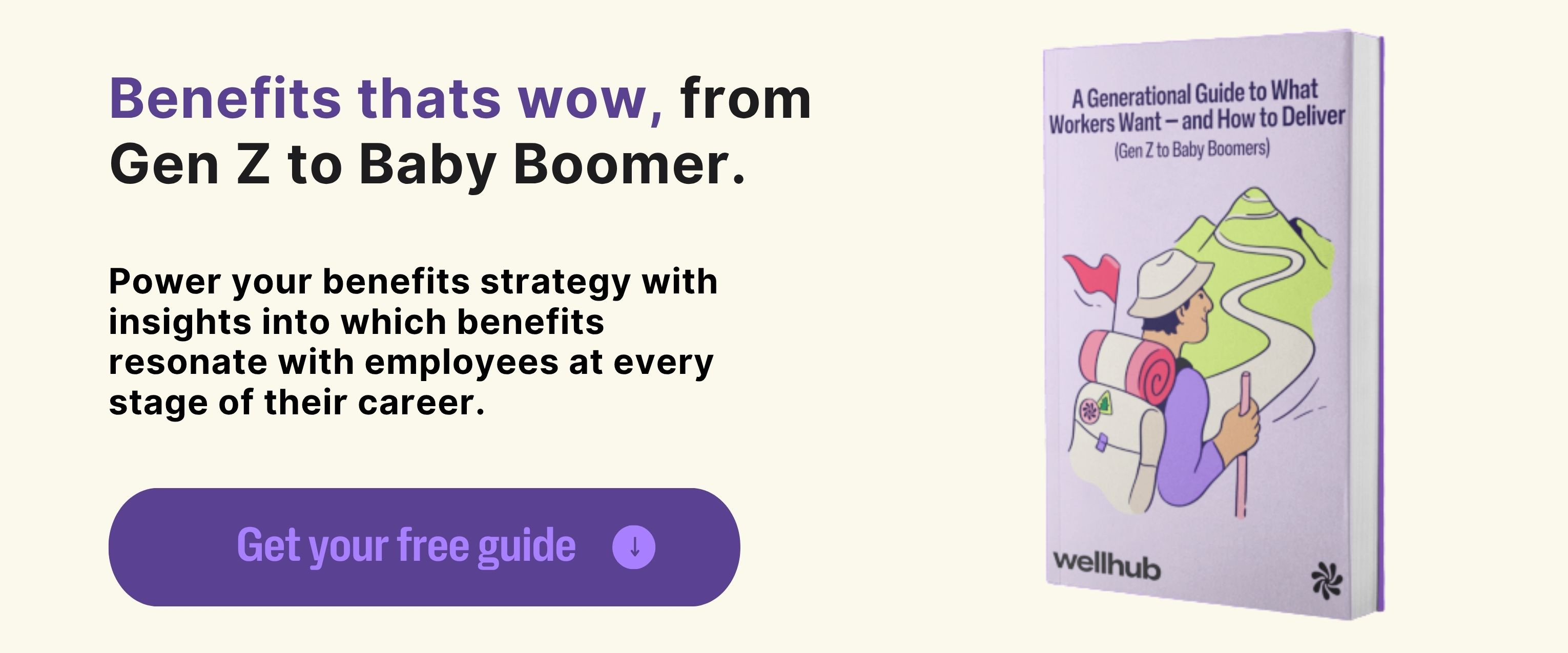
Foster a Positive Culture
A positive, encouraging work environment is one that will make employees want to stick around. Focus on key aspects like:
- Encouraging open communication
- Investing in employee growth
- Fostering transparency, especially from company leadership
- Supporting employee wellbeing
- Recognizing and rewarding employee accomplishments in several different ways
- Fostering collaboration and teamwork
Provide Flexibility
The work landscape has changed significantly in recent years, and many employees want or even expect flexibility from their employers. When possible, offer employees the opportunity to adjust their start and end times, work remotely or with a hybrid schedule, or even complete their work over a four-day workweek.
Conduct Exit Interviews
The people leaving your company are invaluable resources for reducing employee turnover. Conduct exit interviews to figure out why they're leaving and what you can do differently. Ask questions like:
- What prompted you to look for another job?
- What are the top reasons you're leaving this company?
- What did your manager do well, and what could use improvement?
- How would you describe our company culture?
- Do you think you had opportunities for growth and professional development?
Reducing Employee Turnover Starts With Wellbeing
Employee turnover can be high for many different reasons, like inadequate compensation, a toxic work culture, or poor hiring practices. Calculate your turnover rate, and if you're not happy with it, investigate the root causes. From there, you can implement strategies to make sure you're hiring the right people, setting them up for success, and providing support to make them want to stay.
More and more companies are implementing employee wellness programs as part of their efforts to improve employee retention and reduce turnover. These programs support employees' physical and emotional wellness and can be part of a very strong benefits package. Benefits like these go a long way toward persuading employees to stay with a company.
You don't have to design a wellness program from scratch, either. Wellhub puts together all the best wellness resources and tools to create effective wellness programs that your employees will appreciate. Call to speak with a Wellhub wellbeing specialist to see how Wellhub can become a part of your new, improved benefits package.

Company healthcare costs drop by up to 35% with Wellhub*
See how we can help you reduce your healthcare spending.
[*] Based on proprietary research comparing healthcare costs of active Wellhub users to non-users.
Category
Share

The Wellhub Editorial Team empowers HR leaders to support worker wellbeing. Our original research, trend analyses, and helpful how-tos provide the tools they need to improve workforce wellness in today's fast-shifting professional landscape.
Subscribe
Our weekly newsletter is your source of education and inspiration to help you create a corporate wellness program that actually matters.
Subscribe
Our weekly newsletter is your source of education and inspiration to help you create a corporate wellness program that actually matters.
You May Also Like

How to Build a Career Page That Converts (Examples) | Wellhub
See how to build a career page that showcases your EVP, boosts candidate experience, and turns high-intent visitors into qualified applicants.

Talent Acquisition Strategies: How to Attract Top Talent | Wellhub
Proven talent acquisition tactics to attract, engage, and retain top talent while boosting workplace wellness and long-term growth.

HR Guide to Recruiting Dashboards: Metrics, Building Templates & Examples | Wellhub
Overhaul your recruitment analytics with a perfectly optimized recruiting dashboard to track metrics like time-to-hire and cost-per-hire.